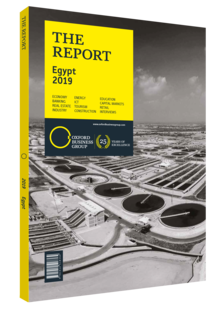Increased reserves and supportive fiscal reforms reduce Egypt's deficit and encourage growth
The IMF, in a report issued in November 2018, forecast GDP would expand by approximately 5.3% in FY 2018/19, increasing over the 4.2% expansion seen a year earlier and marking the highest rate of annual growth since 2008. This was supported by figures released by the Central Bank of Egypt (CBE), which put year-on-year GDP growth at around 5.3% in the first half of the year, driven by strong performances in extractive industries (9%), manufacturing (4.2%), wholesale retail and trade (4.2%), and real estate (4.1%).
Reserves & Imports
The stronger economy was also reflected in a rise in foreign currency reserves, which totalled $42.5bn at the end of 2018, up 15% on the $37bn seen a year earlier, according to CBE data. This rise could be further bolstered by an expected drop in the country’s import bill, after the government halted inward shipments of liquefied natural gas in September 2018, after meeting gas self-sufficiency, which has been estimated will save around $3bn per year. However, imports could be resumed in the coming years following investment aimed at increasing downstream capacity, which could allow for the processing and re-export of gas sourced from other countries.
Domestic gas production has been estimated to total around 60bn cu metres in 2018, up from 49bn cu metres in 2017, with the figure forecast to rise to 72bn cu metres in 2019. This will not only increase the gas available for domestic consumption, but could also provide opportunities for export, with limited shipments of around 2m cu metres sent to Jordan in 2018.
Reforms & Budget
The economy has also continued to benefit from external support, with both the IMF and the World Bank backing the government’s reform programme. In October 2018 the IMF announced the release of a further $2bn of Egypt’s $12bn loan deal. This followed the completion of the IMF’s fourth review of Egypt’s economic reform programme, with the fund saying the country’s economy was performing well. The three-year agreement, brokered in November 2016, saw the government commit to a series of fiscal reforms – including tax increases, spending cuts and the removal of fuel subsidies – designed to improve the budget balance and stimulate economic activity in return for the loan. The reforms have helped reduce the fiscal deficit from 12.5% of GDP in FY 2015/16 to 9.8% in FY 2017/18, according to officials, with ongoing measures expected to lower this to 8.4% by the end of FY 2018/19.
In addition, the importance of the policy changes are being recognised by local stakeholders, who are hopeful that it continues to support private enterprise and thus the broader economy. “The recent strengthening of the regulatory framework was an important milestone.’ Tarek Kandil, chairman and managing director at Al Ahly Leasing, told OBG. “As this framework evolves, it is important to ensure that it will have a significant impact on the ability of leasing to contribute to longterm business growth,” he said.
The IMF credited the fiscal measures with reducing government debt from 103% of GDP in FY 2016/17 to 93% in 2017/18, while the fund expects the economy to gain momentum in 2019 with GDP growth of 5.5%. As a result of this progress, in February 2019 the disbursement of the fifth tranche – $2bn to bring the total drawn to $10bn – was approved by the IMF.
Inflationary Pressure
On top of improving budgets, inflation continued its downward trend across 2018, supported by the CBE’s monetary policy. Headline inflation began the year at 17.1%, with the CBE’s decision to lower its benchmark interest rate from 18.75% to 16.75% over the course of February and March coinciding with a drop to year-low inflation levels of 11.4% in May. While the figure rebounded to 17.7% in October, it fell again to 12% in December. Controlling inflation has been a key challenge in recent years following the decision to float the pound in late 2016, which led to the currency losing almost 50% of its value against the dollar before stabilising. This caused inflation to jump sharply to three decade-high levels of 33% in July 2017.
You have reached the limit of premium articles you can view for free.
Choose from the options below to purchase print or digital editions of our Reports. You can also purchase a website subscription giving you unlimited access to all of our Reports online for 12 months.
If you have already purchased this Report or have a website subscription, please login to continue.

